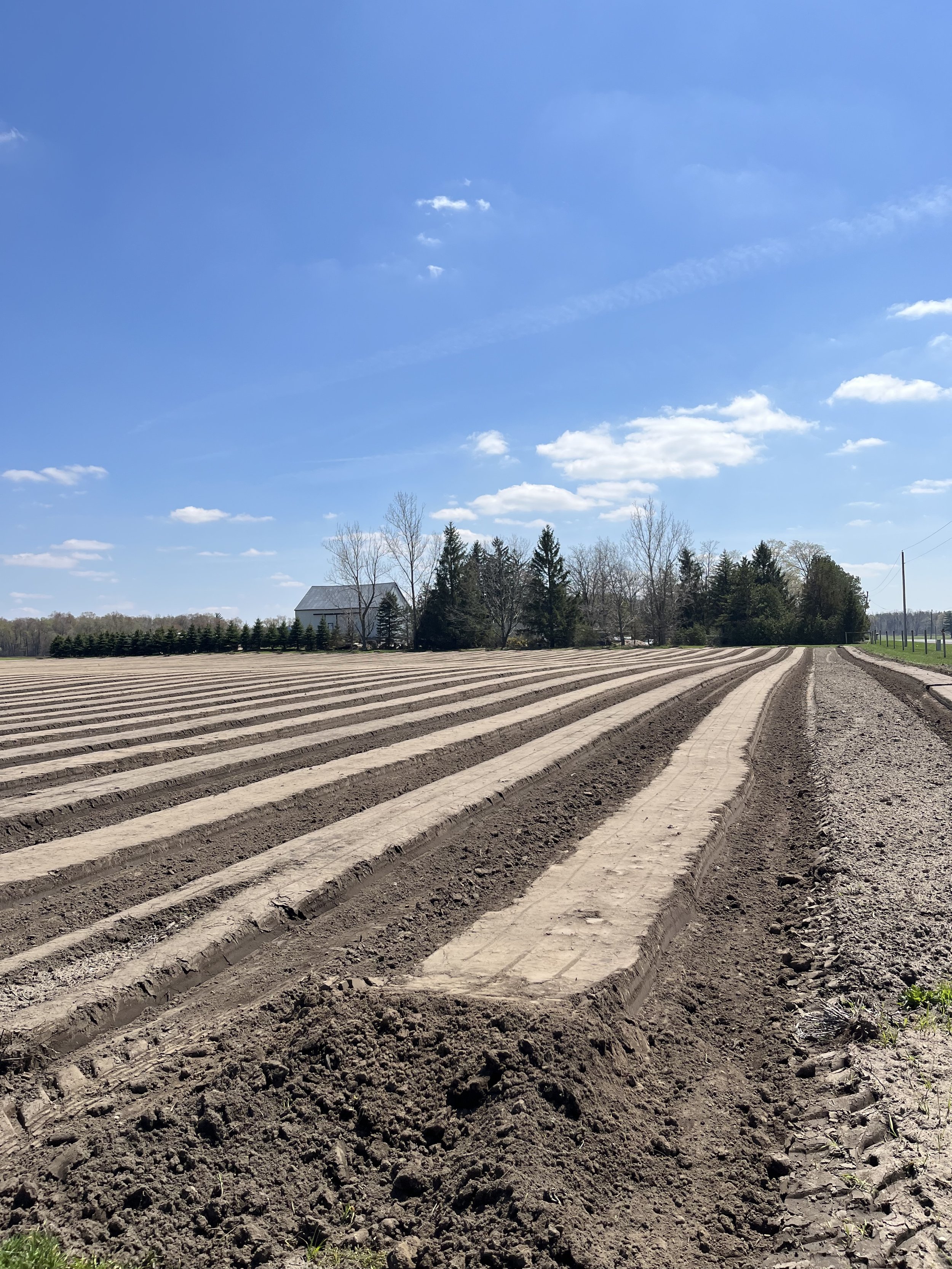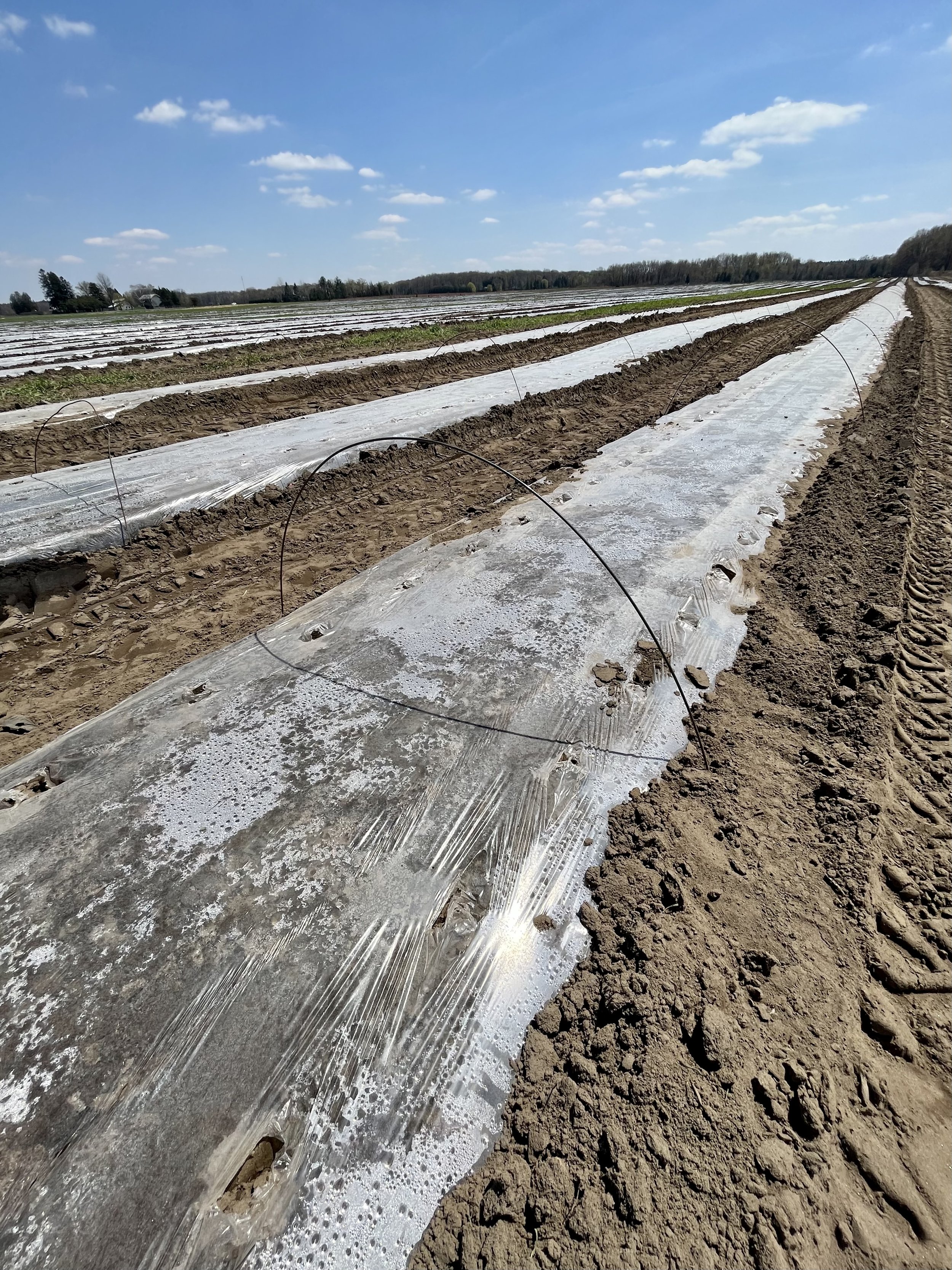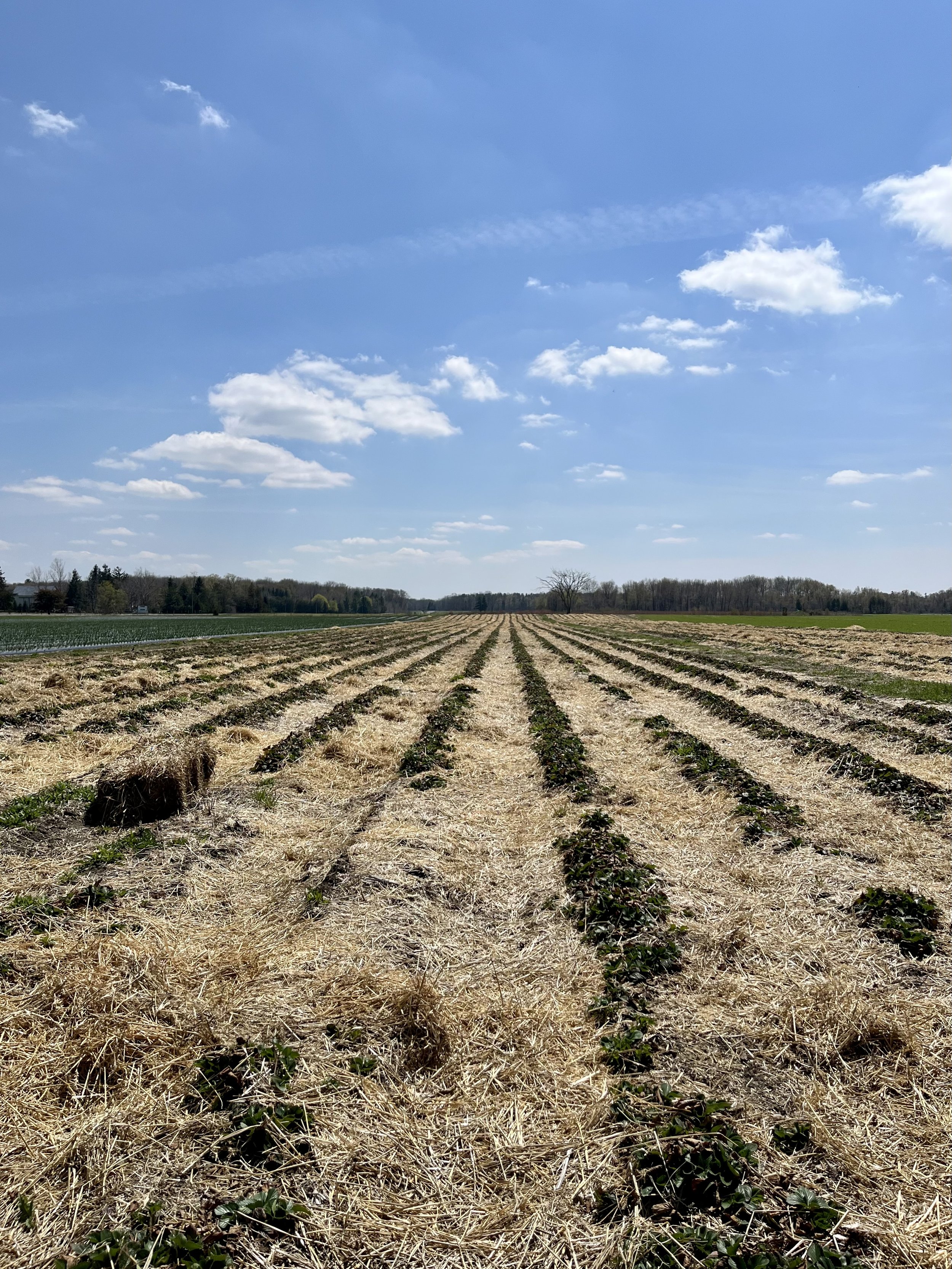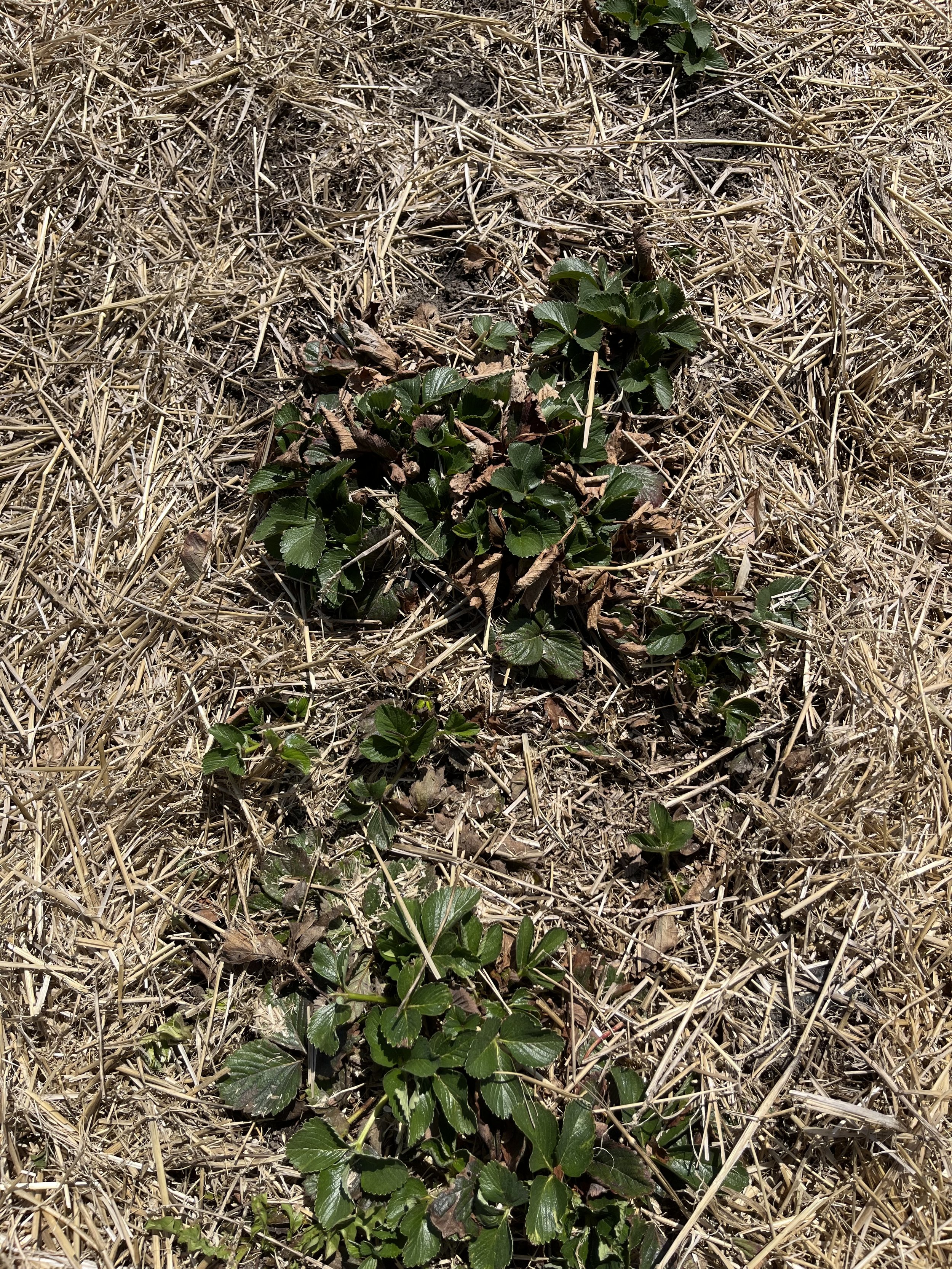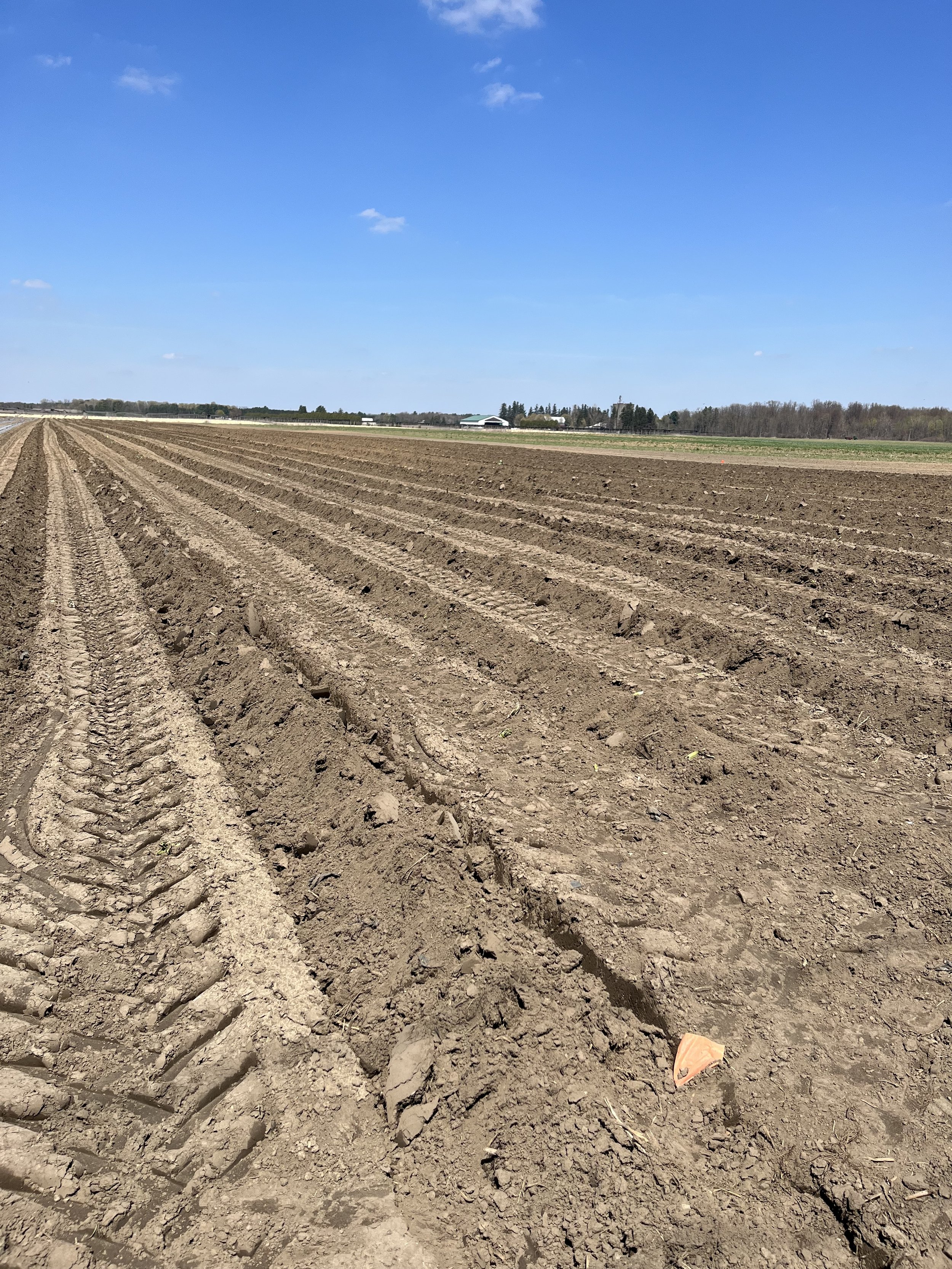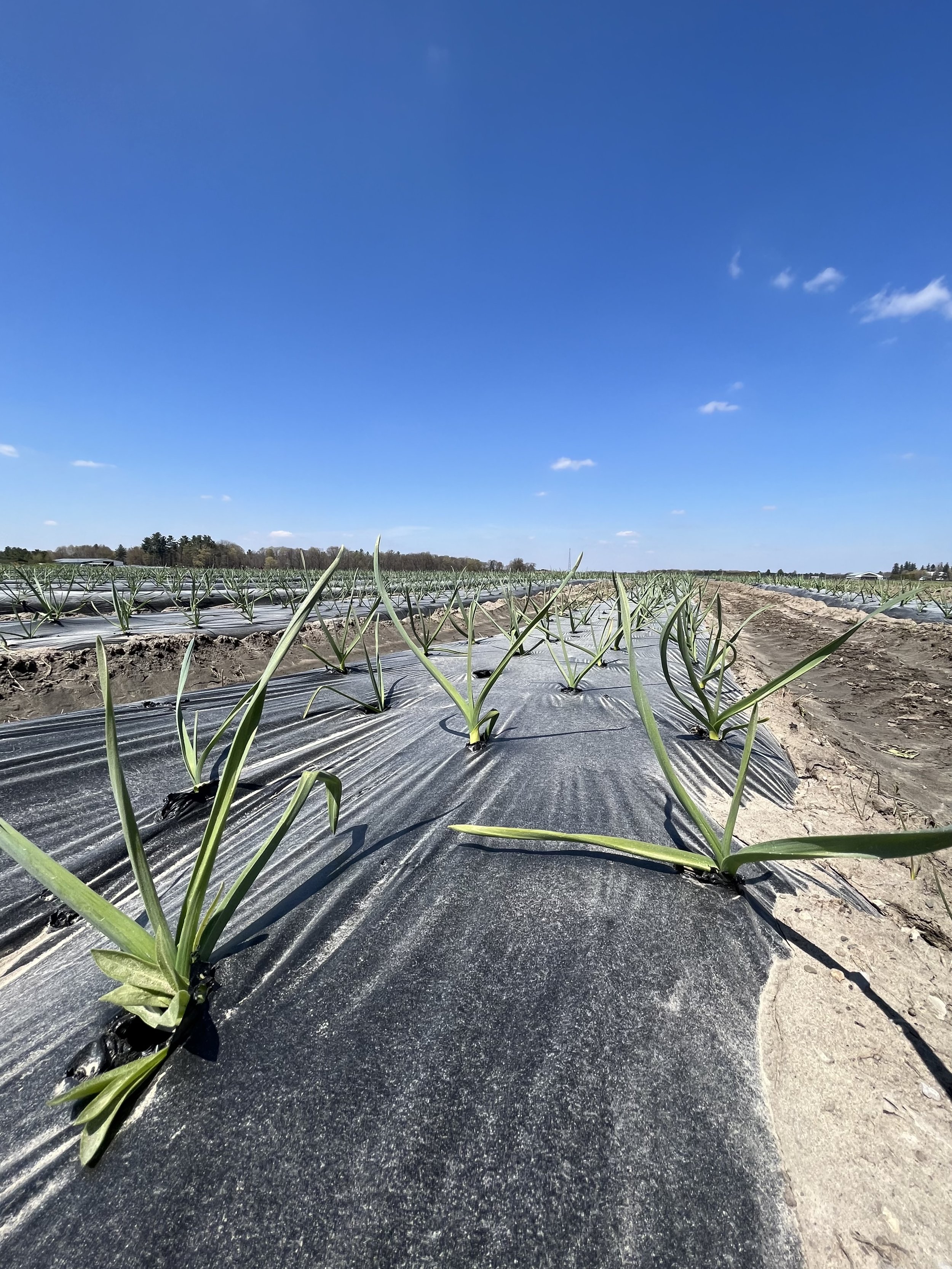Can you believe we’ve reached the end of April already? This month has been a whirlwind, and all over the place weather-wise. We are looking forward to May and are hopeful for a bit more predictability coming our way soon. It may becalling for rain today, but the sun was shining nicely yesterday, so I ran out to snap a few photos to help fill you in on what we’ve been up to in the past week!
First up, our raspberry patch is looking all spruced up thanks to a thorough pruning and trellis reinforcement with baler twine. These raspberries are located at our Pick-Your-Own Patch and will be ready for harvest in mid-July. This crop was planted in 2020, so this will mark year 3 of harvest. We had quite a significant crop last year (their second year of growth) so we anticipate this season being even bigger and better!
Next, we’ve been hard at work out in the fields this week, preparing for planting. The specific process varies slightly depending on the crop, but the overall steps are the same.
First, we mark out “strips” using a tractor enabled with a GPS system. This system keeps the tractor driving straight, and helps ensure the strips are evenly spaced. The strips are 60 feet apart and mark where the path between rows of beds will be. This path is where the tractors drive in between the beds of produce.
Next, we lay the beds. There’s an attachment that goes on the back of our tractor, and it forms the soil into beds that are slightly raised, and are 33 inches wide. These beds have 6-foot centres (6feet from the centre of one bed to the centre of its’ neighbour). This allowsfor space between the beds where we can walk and where a tractor’s wheels cango for planting and weeding purposes.
Third, we cover the beds. These bed covers are weighed down on the sides using soil, and they will help trap moisture and heat and suppress weeds, all things that contribute to a more successful growing season!
Fourth, we punch holes in the bed covers and add either a seed or a transplant, depending on the crop.
Next, we add wire hoops, which will help support an additional layer of cover, pictured below.
Finally, we lay the row covers, which trap even more heat, and speed up the growing process significantly. These row covers have holes punched into them, to allow for air flow. They will be removed once the plants reach a certain point in their growing stage (flowering for many, as the bees will need access for pollination!) Additionally, if they are left on for too long it can “cook” the plants, so we have to be careful!
In the top left photo you can see a tractor in the background. You can’t really tell, but this tractor has a planter on the back of it, and our crew is seeding the first sweet corn of the season. Sweet corn is planted from seed directly into the soil, as it is a crop that is fairly cold-tolerant and doesn’t require as much help to grow when compared to a crop like melons.
Pictured above are our overwintered June strawberries. They were covered with straw last fall, which helped to insulate them and protect them from cold temperatures. Now that it’s starting to warm up though, we raked the straw off to allow the plants to have access to sunshine again! Soon these plants will blossom, and these blossoms will turn into sweet berries. The straw will stay between the rows, as it also helps with weed suppression and moisture retention, as well as helping to minimize transfer of dirt and bugs from the soil to the berries.
In the above photo there are more strawberries. These ones are our everbearing variety, though! Everbearing strawberries are a variety that responds to sunlight differently. Traditional June strawberries produce for around 6 weeks each season, from early June through to mid-July, while everbearing varieties start to produce berries in July, and continue until we experience frost in the fall. Typically everbearing strawberries are a one-season crop, but you can overwinter them and with the help of row covers, produce an early spring crop. That’s what we’re doing here! We realize it doesn’t really look like a field of strawberries at the moment, but once those row covers are pulled off, we will be treated to an early taste of spring strawberries.
And finally, pictured above are the beginning stages of two delicious vegetables, which also happen to pair well in a culinary sense, too: potatoes and garlic. The potatoes were just planted this week, while the garlic was planted last fall and is just now beginning to pop up out of the soil. We will start to harvest some of the garlic within the next week or so. At this stage it will be ‘green garlic’ aka baby garlic, and is deliciously tender and sweet. The greens are tender too, which means the whole plant can be used and enjoyed at this stage, much like green onions.



